25 - Small polyp stony corals
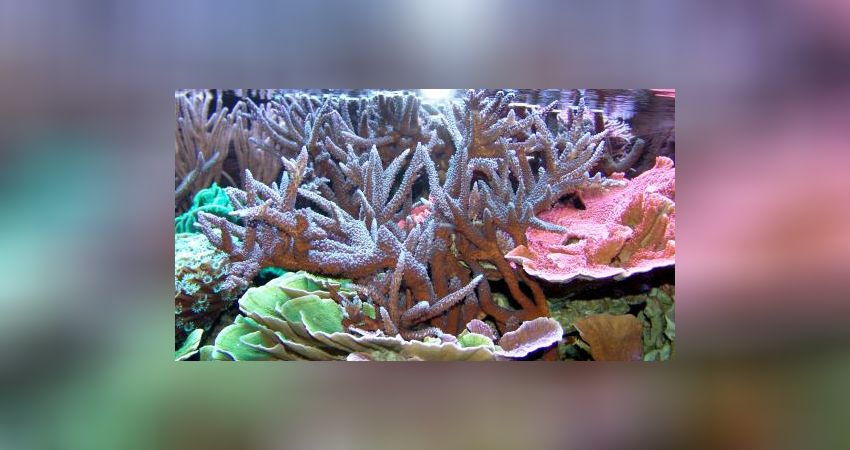
This article deals with the genus SPS [Short Polyp Scleractinia] i.e. Acropora, Montipora etc. etc.
Small polyp stony corals (order Sclearctinia)
This type of coral has been a topic in marine aquaristics for a good 10 years now. Due to increasingly better water values, which requires above all a good technique, it has been possible to keep these colourful corals for a long time. In the late 1980s until the beginning of the 1990s it was hardly possible to keep or even propagate these species for a long time. Times and possibilities have changed fundamentally, and often the trend among many "new aquarists" is towards precisely this type of coral.

Great stocks of Acropora and Montipora in the aquarium....
In the meantime, the small polyp stony corals (SPS = Small Polyp Stoney Coral) have become probably the most widespread corals in home aquariums. There are hardly any aquariums left where they are not found, and very often the small polyp stony corals are the majority in the aquarium.
General:
Systematists today assume 18 stony coral families with a total of over 100 genera. The two genera Montipora (over 70 species - Veron 2000) and Acropora (over 180 species - Veron 2000) are the most species-rich. The care of small-polyped stony corals is usually far more complex than that of soft corals due to the requirements of the corals.
In the following we will give you a brief overview of the important key points for keeping small polyp stony corals.
Po4/No3 values:
While large-poylpigeon corals can usually cope with higher nutrient values, small-poylpigeon corals quickly show a loss of colour, and in some cases the growth of the animals has been halted. The corals that used to be colourful quickly turn into an often unattractive brown. The reason for this is the increased supply of nutrients. The more nutrients, the more zooxanthellae are formed, the browner the animal will become. If there is still an oversupply of nutrients, and a possible imbalance in the water, then tissue dissolution can occur.
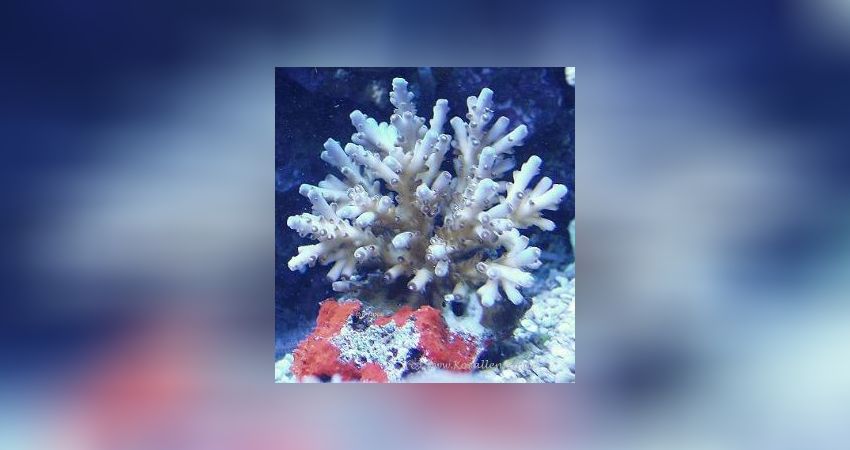
Acropora granulosa, which needs the best water values and also seems a little more sensitive. Only grows in the best conditions.
SPS corals love clean and clear water. In order to keep SPS corals in their natural colours in the long term, phosphate and nitrate levels should be kept as low as possible. The authors recommend values below 20 mg nitrate and below 0.1 mg phosphate. In time you will notice that you can control the phosphate value with various phosphate adsorbers. You should also pay attention to the nitrate value. Certainly corals will still grow with somewhat higher nitrate values, but often do not show the growth and colours as with lower nitrate and phosphate values.
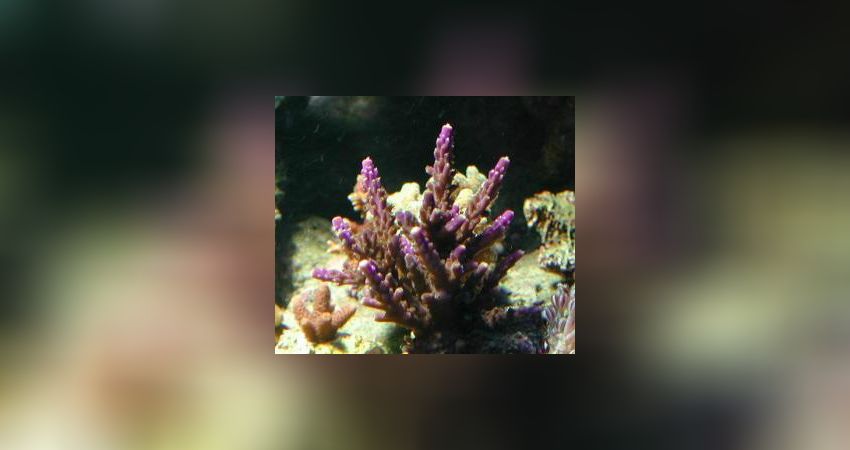
Acropora secale: purple &colours, yellow spikes and with luck larger polyps...
The small-polyped stony corals presented here live on light via their zooxanthellae, although it is now assumed that they can also actively hold plankton. Of course, there are also stony corals that do not live from light. These are azooxanthellate stony corals, (such as Tubastrea ) which we have covered elsewhere.
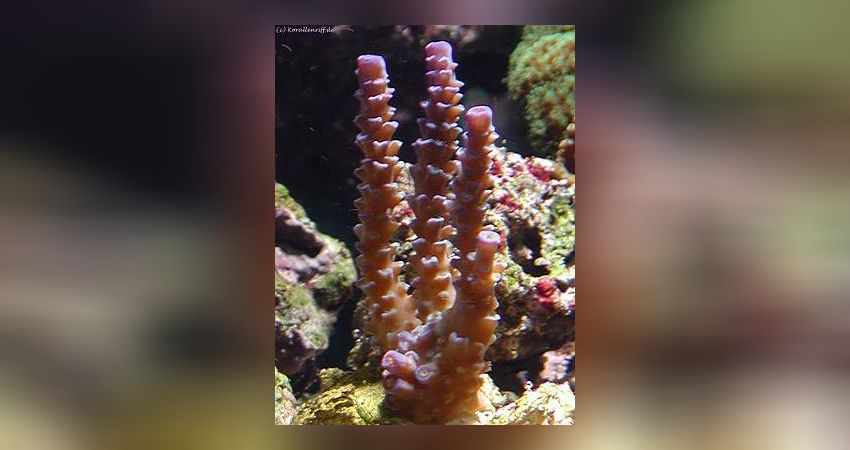
Light:
SPS corals need far more light than many other coral species. Also, the light intensity has a very high share in the colouring of the corals. This means, roughly speaking, that you should offer at least 250 watts to a 60 cm high tank. As an alternative to HQI lighting you can of course use the T5 tube lighting that has been known for years. If you offer too little light, your corals will die and simply starve to death.
Calcium and magnesium supply:
Mostly the care of small polyped stony corals makes the use of a calcium reactor necessary, or alternatively another supply of calcium ions and carbonates. The magnesium content should also be kept in mind in conjunction with the calcium value. Calcium should be at approx. 420 mg/L at all times, magnesium should be kept at 1350 mg/L. In addition to the Po4 and No3 values already mentioned, the calcium value should also always be kept in mind. Montipora species in particular take a low calcium content in the water more quickly than most other small-pole stony corals.
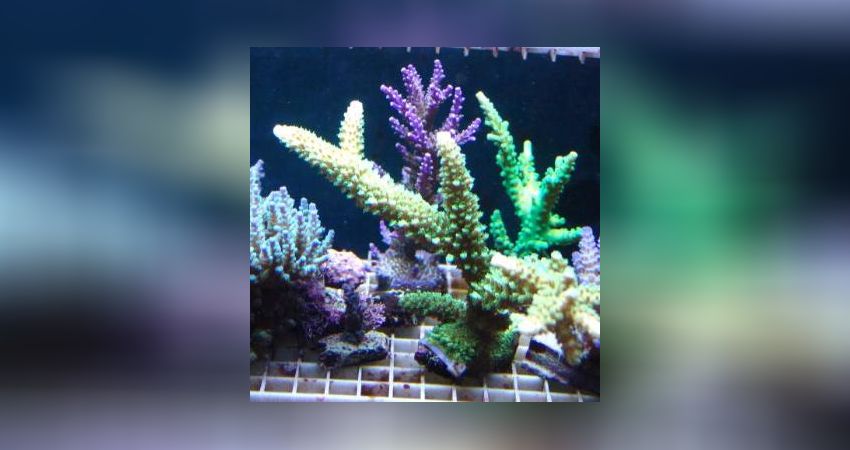
In the picture you can see several offspring corals, in different colours. You will only get these colours under optimal conditions!
Salinite/density:
With regard to the care of small polyp stony corals, it is also very important to observe the salinite. Many aquarists have experienced considerable problems when the salinity falls below or exceeds the set values, which usually results in the small polyp stony corals dissolving. Their target value should always be between 34/35 per mil, or 1.022 and 1.024 density.
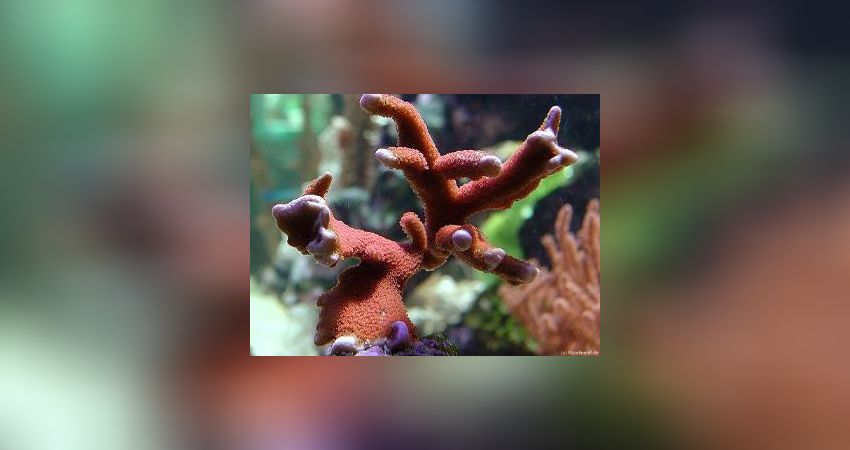
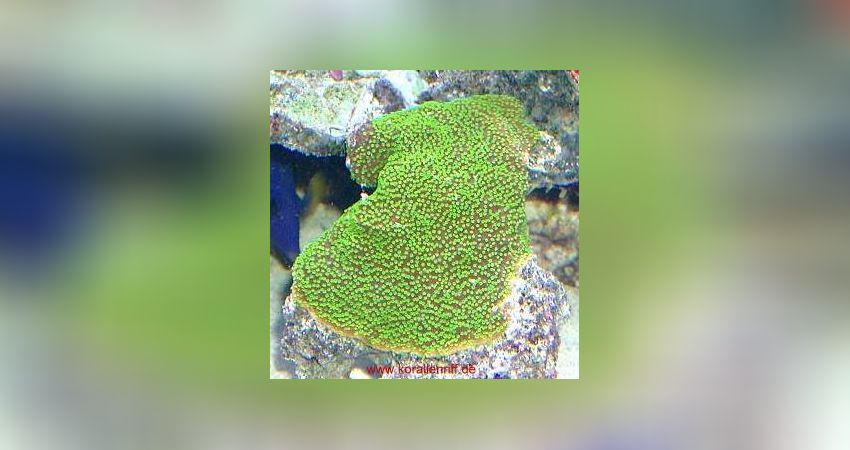
Montipora digitata red. this species comes in different colours. Montipores grow either flat, or high.
Water movement:
If you offer clean and clear water, stable water values and low nutrient concentrations, as well as an alternating strong current of at least 15 times their water volume, nothing stands in the way of the care of small polyp stony corals.
Montipora shallow-growing. This species covers the substrate whereas other species grow in the open water. Montipores grow quickly and are considered to be real "reef consolidators".
Breeding:
Many aquarists and the trade offer an abundant selection of breeders' corals. Meanwhile, many aquarists are also able to propagate their stony corals and obtain offshoots by fragmentation. In most cases, a branch or piece of the mother coral is cut off and glued on again. Most coral glues offered by the trade are suitable for this purpose.
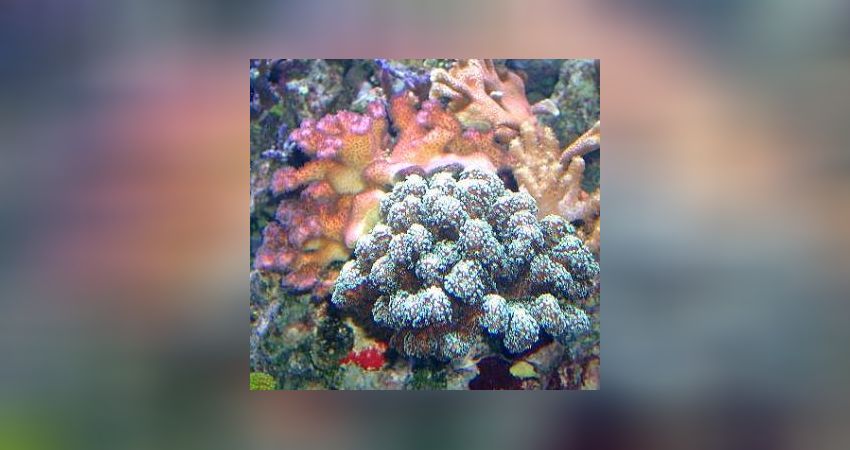
In the picture you can see three corals that have grown into each other. Poccilopora, Stylophora and a red Montipora. The green Stylophora is asserting itself and gradually displacing the other two. The Poccilopora suffers most here. Here the keeper should intervene in a regulating way to preserve the species.
Diseases and pests:
It is certainly important to mention a serious plague on Acropora corals, which has only been known for a few years. This is a whirl worm that grazes on acropores in perfect camouflage. Therefore, the authors recommend a precautionary iodine bath when purchasing new corals (including offspring). Your formerly beautiful coral could then look exactly the same. Often the infestation is noticed too late and the corals have to be removed from the tank for treatment. There are also not many predators, we can only mention the six-striped wrasse, which can often be very helpful in the case of a tubellaria infestation.
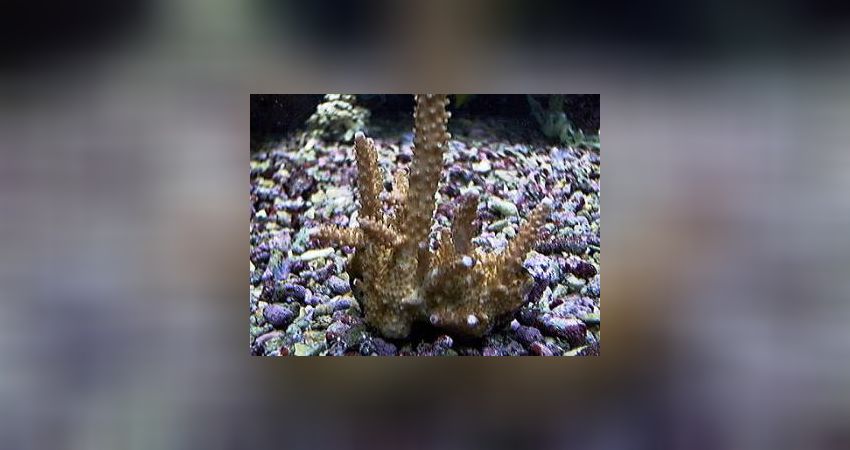
Finally, we would like to give you an important hint: Pay attention to the temperature in the aquarium, especially in summer. Small polyp stony corals do not tolerate temperatures above 30 degrees Celsius for long periods of time. This is where the term coral bleaching comes into play. Your corals bleach out! It is therefore essential to keep temperatures below 30 degrees! There are always reports of entire stocks being killed because the keeper forgot to cool them in the summer. There are simple methods for cooling. As an immediate measure, and to quickly bring the temperature down a few degrees, a stand fan has proven to be sufficient in most cases. If you still can't get the temperatures under control, you should consider a cooling unit, which can be a good solution to this problem.
Frank Diehl and Robert Baur-Kruppas
How do you like this article?
Info
Author

Bookmark
Comments
Topics
Similar articles
- How a marine aquarium is created Part 50: What are the costs of a 400 litre marine aquarium?
- 05 - Technical basin
- How a marine aquarium is created Part 52: The end of the Aqua Medic Armatus 400
- How to create a marine aquarium-Part 12: Installing the carbon/adsorber filter
- 06 - The piping
- The nano reef: set-up and basics
- Photographing under blue light - 4 clip filters in comparison
- 30 - Surgeonfishes Part 2
- 26 - Large polyp stony corals
- 01 - Sources of information
Comments To the top
Please register
In order to be able to write something yourself, you must register in advance.






